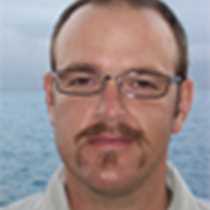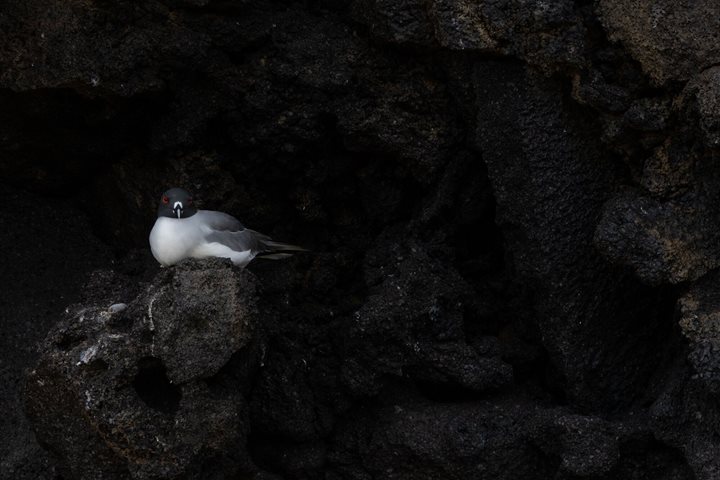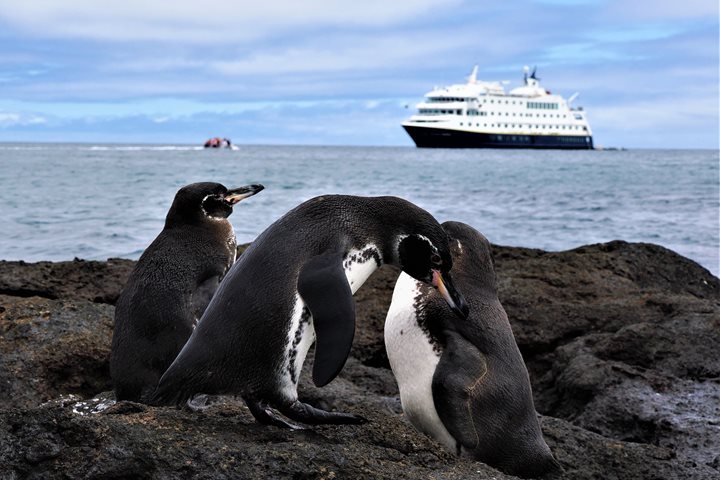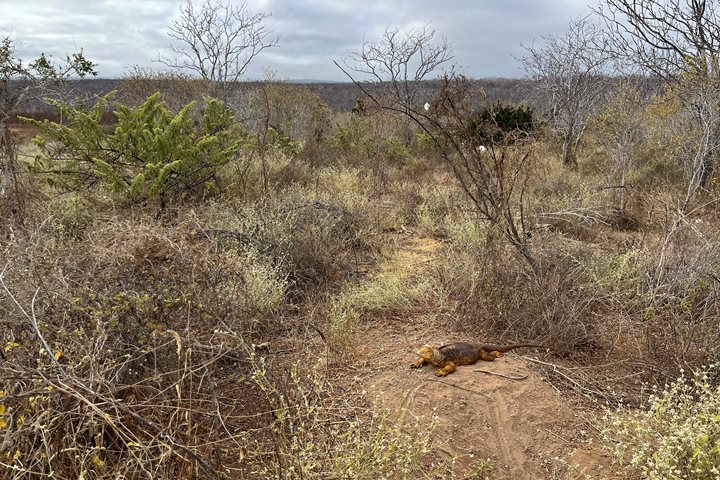Today brings us to another otherworldly destination here on northern San Cristobal Island. Punta Pitt has a desolate landscape that has been carved by wind and water erosion. The large volcanic tuff formations are foreboding as we start the morning with a Zodiac ride along the coast searching for various shore bird species and in particular red footed boobies. We are not disappointed as young red footed boobies, overcome with curiosity, join our navigation as they fly above the bow. Brown noddies and Galapagos shearwaters flit over the water searching for subsistence. As we land on a fine sand beach we note the sparkle that it produces from the high olivine crystal content. Starting out for our hike we are surrounded by large spiny vegetation and an occasional San Cristobal mocking bird. In 1835, Charles Darwin appeared to be more interested in the mocking birds of the archipelago than the finches that hold his name. Of four species, this one is specific to this island. Climbing up a steep washed out ravine we are able to note the markings from past waterfalls most likely created during the El Niño phenomena. The past formation of this extreme volcanic terrain becomes clear as we gain altitude and see the coast of San Cristobal littered with tuff volcanic cones. A small lava lizard passes us on the trail and it is also noticed by all as being unique to this island. The end of this trail passes through an area with red carpet weed (Sesuvium sp.) surrounding us and we note a nesting area for the red footed boobies. So different from our other destinations this week, we continue to be surprised at the diversity of this “world among itself.” Upon our return to our landing beach we are able to enjoy the welcoming waters for a swim as sea lions play and a large bull passes by eyeing this group of Homo sapiens.
After a couple hours of navigation we arrive to a small satellite island off the coast of San Cristobal. Leon Dormido (sleeping lion) is also a tuff formation similar to our morning visitor site, however sheer cliffs have formed from the continuous oceanic erosion. We can’t land here, however we are able to snorkel here through a channel that separates the island and a pinnacle that formed from the splitting of the two. Different species of small sharks frequent this channel as they are protected from the outer reefs and we swim among them. Small Galapagos sharks and black tipped sharks are among us as our heart rates rise and we become content with being part of this environment. After our return, Captain John circumnavigates the island as we enjoy a clouded sunset and a glass of champagne, an incredible end to a fantastic week here on the National Geographic Endeavour.







